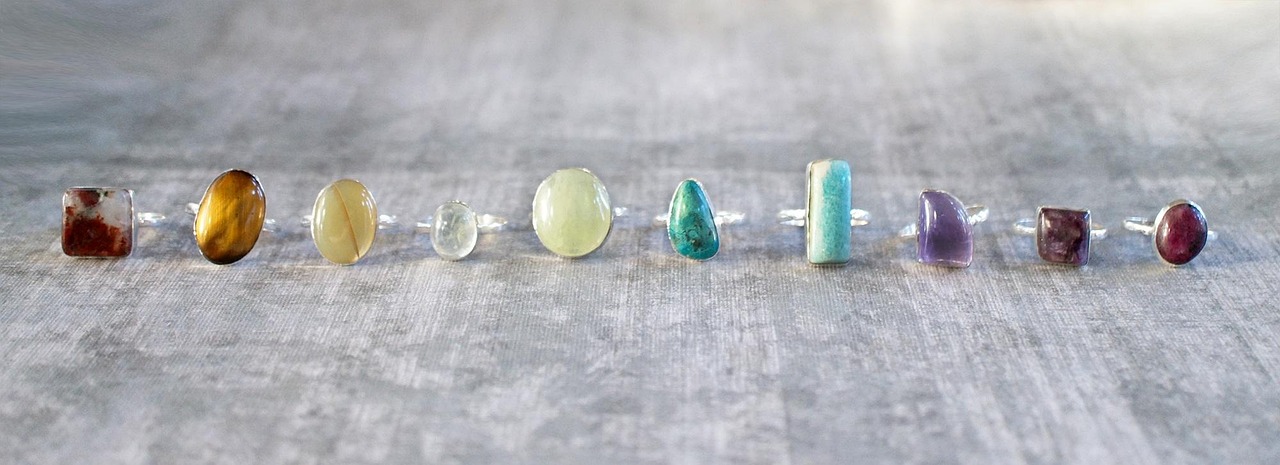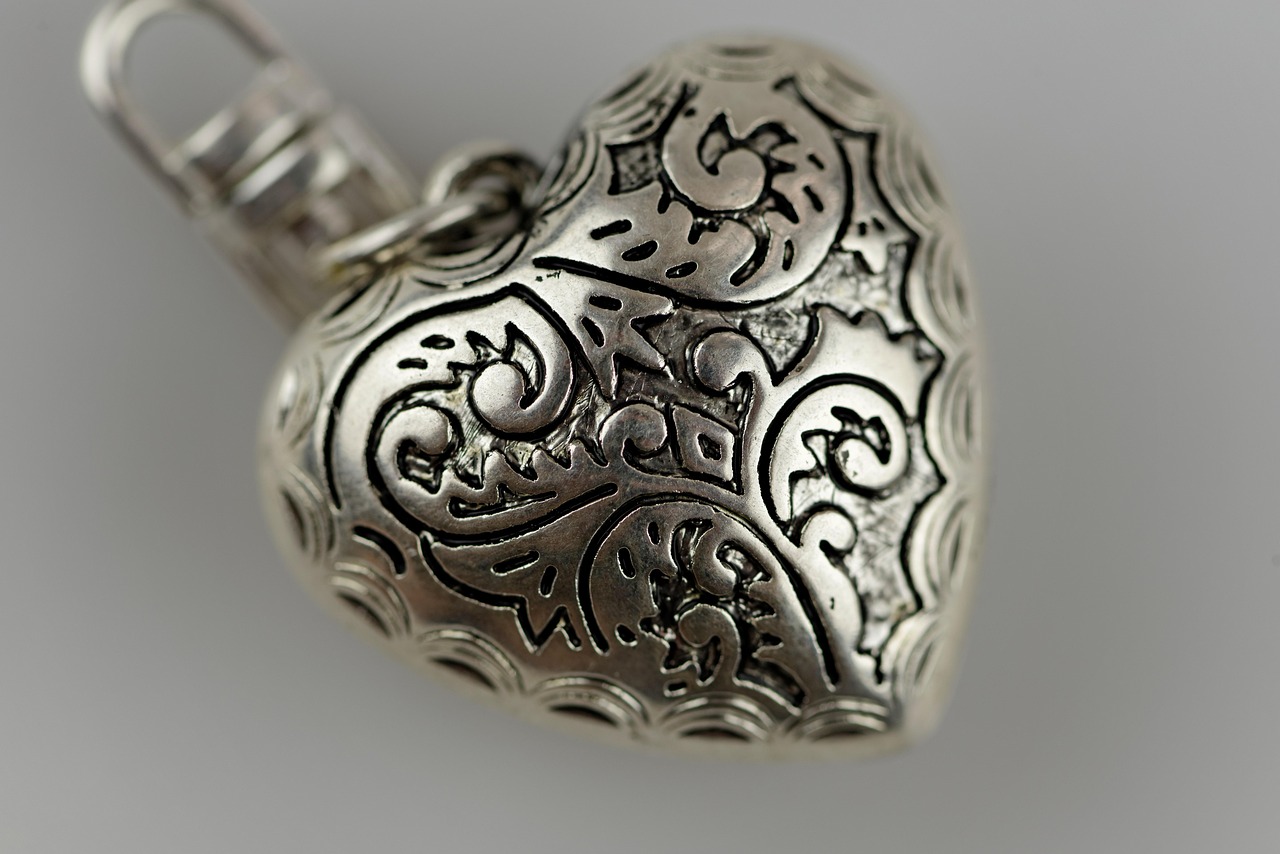This article delves into the profound ways in which cultural traditions shape jewelry design. By examining various styles, materials, and techniques across different cultures, we can appreciate the intricate relationship between heritage and contemporary jewelry-making.
Cultural Significance of Jewelry
Jewelry is not just an adornment; it often carries deep cultural meanings. It can symbolize status, identity, and individual beliefs. Understanding these meanings provides valuable insights into the design choices and materials favored in different cultures.
Historical Influences on Jewelry Design
Throughout history, jewelry design has undergone significant transformations, influenced by social, political, and economic factors. Key historical periods have left lasting impacts on jewelry styles and techniques, shaping what we see today.
Ancient Civilizations and Their Jewelry
- Egyptian Jewelry: Symbolism and Materials
- Greek Jewelry: Artistry and Techniques
Renowned for its intricate designs and the use of gold, Egyptian jewelry reflects the symbolism behind common motifs. The materials favored by ancient artisans reveal much about their culture and values.
Greek jewelry is characterized by its emphasis on artistry and craftsmanship. The techniques employed by ancient Greek jewelers continue to inspire contemporary designs, showcasing a blend of tradition and innovation.
Influence of Religion on Jewelry Design
Religious beliefs significantly shape jewelry design, with symbols and motifs reflecting spiritual values. Different religions impart unique aesthetics to jewelry, influencing design choices across cultures.
Regional Variations in Jewelry Styles
- Asian Jewelry Traditions
- African Jewelry: Craftsmanship and Meaning
Asian cultures boast rich jewelry traditions that differ from country to country. Unique features of jewelry from regions like India and China highlight the diversity within these traditions.
African jewelry is often handcrafted and deeply symbolic. The craftsmanship involved and the cultural significance behind various styles showcase the rich heritage of the continent.
Modern Interpretations of Traditional Jewelry
Contemporary jewelers frequently draw inspiration from traditional designs, blending old and new techniques. This fusion reflects cultural heritage while appealing to modern trends.
Fusion of Styles in Contemporary Jewelry
The blending of diverse cultural styles in modern jewelry design results in unique pieces. Globalization has played a crucial role in influencing contemporary jewelry trends, creating a vibrant marketplace.
Preserving Cultural Heritage Through Jewelry
Many modern jewelers are committed to preserving cultural heritage in their designs. Various initiatives and movements aim to keep traditional techniques and styles alive in today’s market, ensuring that the stories behind these pieces continue to be told.

Cultural Significance of Jewelry
The Cultural Significance of Jewelry
Jewelry serves as a powerful medium of expression, deeply intertwined with cultural heritage. Across various societies, it plays a pivotal role in representing status, identity, and beliefs. This significance goes beyond mere adornment; it encompasses stories, traditions, and the very essence of a community.
In many cultures, jewelry is not just an accessory but a symbol of social standing. For instance, in ancient civilizations, such as the Egyptians, jewelry was often used to signify one’s rank within society. The materials used, from gold to precious stones, were carefully chosen to reflect the wearer’s wealth and power. Similarly, in contemporary settings, certain types of jewelry, like engagement rings or family heirlooms, continue to represent significant life events and social statuses.
Moreover, jewelry often embodies cultural identity. Different regions have distinct styles that tell the stories of their people. For example, Native American jewelry frequently incorporates symbols that represent nature and spirituality, while Indian jewelry is characterized by intricate designs and vibrant colors that reflect the country’s rich cultural tapestry. Understanding these variations provides valuable insights into the values and beliefs of different cultures.
Furthermore, the materials used in jewelry design often have deep cultural meanings. For instance, silver is highly valued in many African cultures, not only for its beauty but also for its association with purity and spirituality. Similarly, coral is often used in Mediterranean jewelry as a protective talisman, showcasing the intertwining of culture and belief.
In conclusion, the cultural significance of jewelry transcends its aesthetic appeal. It is a vital link to our past and a reflection of our identity, making it essential for understanding the diverse world we live in. By appreciating the meanings behind jewelry, we gain a deeper understanding of the cultures that shape our global community.

Historical Influences on Jewelry Design
Jewelry design is a fascinating reflection of human history, evolving through the ages under the influence of various social, political, and economic factors. This evolution has led to a rich tapestry of styles and techniques that speak volumes about the cultures from which they originate. In this exploration, we will delve into the key historical periods that have significantly shaped jewelry design, highlighting how these influences continue to resonate in modern creations.
Ancient Civilizations and Their Contributions
- Egyptian Jewelry: The ancient Egyptians are renowned for their exquisite jewelry, which often featured symbols of protection and power, such as the ankh and scarab. Their use of gold, lapis lazuli, and turquoise not only showcased their wealth but also their beliefs in the afterlife.
- Greek Jewelry: Greek artisans emphasized craftsmanship and artistry, creating pieces that celebrated mythology and nature. Techniques such as granulation and filigree were perfected during this time, influencing generations of jewelers.
The Role of Religion in Jewelry Design
Throughout history, religious beliefs have profoundly influenced jewelry design. In many cultures, jewelry serves as a medium for expressing faith and devotion. For instance, in Christianity, crosses and saints’ medallions are common, while Islamic cultures often incorporate intricate geometric patterns and calligraphy into their designs.
Regional Variations and Cultural Exchanges
As trade routes expanded, so did the exchange of ideas and materials, leading to regional variations in jewelry styles. The Silk Road, for example, facilitated the spread of gemstones and techniques between the East and West, resulting in hybrid styles that reflect a blend of cultures.
Modern Interpretations of Historical Designs
Today, contemporary jewelers often draw inspiration from historical designs, reinterpreting them through a modern lens. This fusion of old and new not only preserves cultural heritage but also appeals to current consumer trends, ensuring that the legacy of past artisans continues to thrive.
In conclusion, the historical influences on jewelry design are vast and varied, reflecting the complexities of human civilization. By studying these influences, we gain a deeper understanding of the significance of jewelry as a form of artistic expression and cultural identity.
Ancient Civilizations and Their Jewelry
Ancient civilizations, such as the Egyptians and Greeks, have left a profound mark on the world of jewelry design. Their unique creations not only served decorative purposes but also held significant cultural and spiritual meanings. This section delves into how these ancient traditions continue to influence modern jewelry, showcasing the enduring legacy of their artistry.
Jewelry from these ancient cultures was often made from precious materials, including gold, silver, and various gemstones. The Egyptians, for instance, utilized lapis lazuli and turquoise to symbolize the heavens and the Nile, respectively. Each piece was meticulously crafted, with designs that conveyed messages about the wearer’s status and beliefs. The intricate hieroglyphics and motifs such as the ankh and sacred scarab were not merely decorative; they were imbued with deep spiritual significance.
Similarly, the Greeks were known for their emphasis on artistry and craftsmanship. Their jewelry often featured mythological themes, with designs inspired by gods and heroes. Techniques such as filigree and granulation showcased their advanced skills and artistic vision. The use of naturalistic forms, such as leaves and flowers, reflects their appreciation for the beauty of nature, which continues to inspire contemporary jewelers today.
As we explore the influence of these ancient civilizations on modern jewelry, it becomes clear that their rich heritage has paved the way for innovative designs that blend traditional elements with contemporary aesthetics. Today, many jewelers draw inspiration from ancient motifs, incorporating them into modern pieces that resonate with both history and current trends.
In conclusion, the jewelry of ancient civilizations like the Egyptians and Greeks is not only a testament to their craftsmanship but also a reflection of their cultural values and beliefs. The impact of their designs is evident in today’s jewelry industry, where the fusion of ancient and modern styles continues to thrive.
Egyptian Jewelry: Symbolism and Materials
Egyptian jewelry is not just a form of adornment; it is a rich tapestry of history, culture, and symbolism. Renowned for its intricate designs and exquisite use of gold, Egyptian jewelry reflects the beliefs and values of ancient Egyptian society. This section delves into the symbolism behind common motifs and the materials favored by ancient artisans, providing a deeper understanding of their craftsmanship.
One of the most notable aspects of Egyptian jewelry is its use of gold, which was considered a symbol of the gods and immortality. The ancient Egyptians believed that gold did not tarnish or decay, much like their own aspirations for eternal life. As a result, gold became the primary material for crafting jewelry, with artisans creating stunning pieces that adorned the living and the deceased alike.
Common motifs in Egyptian jewelry often included symbols such as the Ankh, representing life; the Scarab, symbolizing rebirth; and the Eye of Horus, which was believed to offer protection. These motifs were not merely decorative; they carried profound meanings and were integral to the spiritual beliefs of the time. The presence of such symbols in jewelry served as a reminder of the wearer’s connection to the divine and the afterlife.
| Symbol | Meaning |
|---|---|
| Ankh | Life |
| Scarab | Rebirth |
| Eye of Horus | Protection |
In addition to gold, ancient artisans also utilized a variety of semi-precious stones such as turquoise, lapis lazuli, and carnelian. These stones were chosen not only for their beauty but also for their believed mystical properties. For instance, turquoise was thought to bring good fortune, while lapis lazuli was associated with the heavens and the divine.
Overall, Egyptian jewelry serves as a testament to the skill and creativity of ancient artisans. The intricate designs and rich symbolism embedded in each piece continue to captivate modern audiences, offering a glimpse into a civilization that valued beauty, spirituality, and the eternal.
Greek Jewelry: Artistry and Techniques
Jewelry from ancient Greece is a testament to the incredible artistry and craftsmanship of its time. The techniques employed by Greek jewelers were advanced, showcasing a deep understanding of materials and design principles that have influenced jewelry-making for centuries.
One of the most significant techniques used by ancient Greek artisans was granulation. This intricate process involved fusing tiny metal balls onto a surface, creating a textured and visually captivating effect. This method not only enhanced the aesthetic appeal of jewelry but also demonstrated the jeweler’s skill and precision.
Another remarkable technique was filigree, where fine wires of gold or silver were twisted and shaped into delicate patterns. This technique allowed for the creation of lightweight yet intricate designs, often resembling nature’s forms, such as leaves and flowers. The use of filigree in Greek jewelry exemplified their appreciation for the beauty found in the natural world.
Greek jewelers also mastered the art of casting, which enabled them to create complex shapes and designs that were difficult to achieve through traditional methods. This technique involved pouring molten metal into molds, allowing for uniformity and precision in the final product.
Moreover, the use of gemstones was prevalent in Greek jewelry. Ancient jewelers skillfully set stones like amber, lapis lazuli, and carnelian into their creations, enhancing the beauty and value of their pieces. The careful selection and placement of these stones not only added color but also held symbolic meanings, often representing various gods and goddesses.
Today, the influence of ancient Greek jewelry is evident in contemporary designs. Modern jewelers continue to draw inspiration from these ancient techniques, incorporating them into their work to create pieces that resonate with both history and modern aesthetics. The legacy of Greek jewelry endures, reminding us of the timeless beauty and skill that defined an era.
Influence of Religion on Jewelry Design
The Influence of Religion on Jewelry Design is a multifaceted topic that reveals how faith and spirituality shape artistic expression in adornments. Jewelry has long served as a medium for conveying spiritual beliefs and cultural identity, incorporating symbols and motifs that resonate deeply with the values of various religions.
Across different faiths, jewelry is often imbued with significance. For instance, in Christianity, the cross is a prevalent symbol representing faith and salvation. Jewelry featuring crosses or other Christian symbols not only serves as a personal expression of belief but also as a way to share one’s faith with others. Similarly, in Islam, pieces adorned with calligraphy or geometric patterns reflect the beauty of the faith, emphasizing the importance of spirituality in daily life.
In Hinduism, jewelry plays a crucial role in rituals and celebrations, with pieces often crafted to embody specific deities or concepts. For example, the use of mangalsutra signifies marital status, while intricate designs may include symbols like the lotus, representing purity and divine beauty. This illustrates how jewelry can serve as a tangible connection to spiritual beliefs.
Moreover, in Buddhism, jewelry often incorporates symbols such as the lotus flower or mandalas, which are used to promote mindfulness and spiritual growth. These designs not only enhance the aesthetic appeal but also serve as reminders of the wearer’s spiritual journey.
In summary, the influence of religion on jewelry design is profound and varied. Each piece tells a story, reflecting the spiritual values and beliefs of its wearer. From the intricate designs of Hindu jewelry to the elegant simplicity of Christian symbols, the intersection of faith and adornment continues to inspire and shape the world of jewelry.

Regional Variations in Jewelry Styles
Jewelry styles exhibit a remarkable diversity that reflects the rich tapestry of cultural traditions, materials, and historical influences unique to different regions. This section delves into the distinctive characteristics of jewelry from various parts of the world, highlighting how local customs and available resources shape these artistic expressions.
Influence of Local Materials
Each region utilizes the materials that are most readily available to them, resulting in unique jewelry designs. For instance, Native American jewelry often incorporates turquoise and silver, reflecting the natural resources of the American Southwest. In contrast, Scandinavian jewelry frequently features silver and intricate knot designs, symbolizing unity and eternity.
Cultural Exchanges and Their Impact
Throughout history, trade routes have facilitated cultural exchanges, leading to the blending of styles. For example, the Silk Road enabled the transfer of ideas and techniques between East and West, influencing jewelry design significantly. This cross-pollination is evident in the fusion of Eastern motifs with Western craftsmanship, creating unique pieces that celebrate both traditions.
Distinct Regional Styles
- Asian Jewelry: In India, jewelry is often elaborate, adorned with gemstones and intricate designs that symbolize wealth and status. Meanwhile, Chinese jewelry typically features jade, which is revered for its protective properties.
- African Jewelry: African jewelry is characterized by vibrant colors and symbolic meanings, often crafted from beads, metals, and natural materials. Each piece tells a story, representing the wearer’s identity and cultural heritage.
- European Jewelry: In Europe, styles vary dramatically from the ornate designs of the Baroque period to the minimalist aesthetics of Scandinavian design. Each region’s historical context plays a crucial role in shaping its jewelry trends.
Conclusion
The exploration of regional variations in jewelry styles reveals not only the artistic expressions of different cultures but also the deep connections between jewelry, identity, and heritage. Understanding these variations enriches our appreciation for jewelry as a form of cultural storytelling, showcasing the beauty and diversity of human creativity across the globe.
Asian Jewelry Traditions
are as diverse as the continent itself, reflecting a myriad of cultures, histories, and beliefs. This rich tapestry of jewelry-making showcases unique techniques, materials, and styles that vary significantly from one country to another. In this section, we will explore the distinctive features of jewelry from two prominent regions: India and China.
In India, jewelry is not merely an accessory; it is an integral part of cultural identity and social status. Traditional Indian jewelry is characterized by its intricate designs and the use of precious metals and gemstones. For example, gold jewelry, often adorned with gemstones like rubies, emeralds, and diamonds, plays a significant role in weddings and festivals. The Meenakari technique, which involves the art of enameling, adds vibrant colors to gold, making it a popular choice for bridal jewelry. Additionally, the use of silver in tribal jewelry reflects the local craftsmanship and cultural heritage of various communities.
On the other hand, Chinese jewelry is deeply rooted in symbolism and tradition. The use of jade is particularly significant, as it is believed to bring good luck and protection. Chinese jewelry often features intricate carvings and designs that represent prosperity, longevity, and harmony. For instance, gold and silver jewelry pieces are commonly crafted with motifs of dragons and phoenixes, symbolizing power and beauty. The Chinese knot, a decorative knotting technique, is also prevalent in jewelry, representing unity and eternity.
Both Indian and Chinese jewelry traditions highlight the importance of cultural heritage in shaping design choices. As contemporary jewelers draw inspiration from these rich traditions, they continue to create pieces that honor the past while appealing to modern aesthetics. This blend of old and new not only keeps the cultural significance alive but also allows for innovative expressions of identity through jewelry.
African Jewelry: Craftsmanship and Meaning
African jewelry is a vibrant expression of culture, history, and artistry, often handcrafted with great care and attention to detail. Each piece tells a story, reflecting the rich traditions and beliefs of various communities across the continent. In this section, we will delve into the craftsmanship involved in creating African jewelry and the profound cultural significance behind different styles.
Many African artisans utilize traditional techniques passed down through generations. These techniques often involve the use of locally sourced materials such as beads, metals, and gemstones. For instance, the Masai people of Kenya are renowned for their intricate beadwork, which serves not only as adornment but also as a means of communication, with different colors and patterns representing various messages and social statuses.
Furthermore, jewelry in African cultures often carries symbolic meanings. For example, in many West African communities, jewelry is used during significant life events such as weddings or initiation ceremonies, where specific pieces signify the transition into new phases of life. The Adinkra symbols from Ghana are often incorporated into jewelry designs, each symbol representing concepts such as wisdom, strength, and resilience.
Another notable aspect is the role of jewelry in expressing identity and belonging. In various tribes, specific styles may denote tribal affiliation or social rank, reinforcing community ties and cultural heritage. This practice is especially evident in the use of cowrie shells and other natural materials, which are not only beautiful but also carry deep-rooted significance.
In conclusion, the craftsmanship and meaning behind African jewelry are deeply intertwined with the continent’s diverse cultures. As artisans continue to innovate while honoring their traditions, the rich heritage of African jewelry remains a powerful testament to the creativity and resilience of its people.

Modern Interpretations of Traditional Jewelry
In the realm of jewelry design, the interplay between tradition and modernity creates a fascinating tapestry that reflects both cultural heritage and contemporary aesthetics. Modern jewelers frequently draw inspiration from traditional designs, skillfully blending age-old techniques with innovative approaches to craft pieces that resonate with today’s consumers.
One of the most significant aspects of this fusion is the ability to tell a story through jewelry. Each piece often incorporates cultural motifs that echo the history and values of a particular society. For instance, artisans may utilize symbols that represent love, protection, or prosperity, seamlessly integrating them into modern designs. This practice not only honors the past but also allows for a personal connection for the wearer.
The materials used in contemporary jewelry also reflect this blend of old and new. While traditional materials like gold and silver remain popular, modern jewelers are increasingly experimenting with alternative materials such as recycled metals and sustainable gemstones. This shift not only caters to current trends focused on sustainability but also emphasizes a commitment to preserving the environment.
Furthermore, the techniques employed in modern jewelry-making often pay homage to ancestral craftsmanship. Techniques such as hand engraving and filigree are revived and adapted, allowing contemporary pieces to maintain a sense of authenticity while appealing to modern tastes.
In conclusion, the evolution of jewelry design is a testament to the resilience of cultural heritage. By merging traditional elements with modern techniques, contemporary jewelers create unique pieces that not only celebrate the past but also resonate with the values and aesthetics of today’s society. This ongoing dialogue between old and new ensures that the legacy of traditional jewelry continues to thrive in the modern world.
Fusion of Styles in Contemporary Jewelry
The world of jewelry design has undergone a remarkable transformation in recent years, primarily due to the globalization of culture. This phenomenon has led to a vibrant fusion of various cultural styles, resulting in the creation of unique and innovative jewelry pieces that reflect a blend of traditions and modern aesthetics.
As artisans and designers draw inspiration from different cultures, they create pieces that not only showcase their craftsmanship but also tell a story. For instance, a necklace might combine traditional African beadwork with Eastern motifs, resulting in a piece that is both visually stunning and rich in meaning. This synthesis of styles allows for a broader expression of identity and personal style, appealing to a diverse audience.
Moreover, the influence of social media and e-commerce has made it easier for designers to showcase their work globally. This accessibility has encouraged a cross-cultural exchange of ideas, techniques, and materials. For example, the use of eco-friendly materials from one region can be combined with the intricate metalwork techniques of another, leading to sustainable yet luxurious jewelry options.
Additionally, the rise of cultural appreciation rather than appropriation has become a significant trend in contemporary jewelry design. Designers are increasingly aware of the importance of honoring the origins of the styles and techniques they incorporate. This respectful approach not only enhances the authenticity of the pieces but also fosters a deeper connection between the jewelry and its cultural roots.
In conclusion, the fusion of various cultural styles in modern jewelry design is a testament to the interconnectedness of our world. As globalization continues to shape contemporary trends, we can expect to see even more innovative designs that celebrate cultural diversity while pushing the boundaries of creativity.
Preserving Cultural Heritage Through Jewelry
In today’s fast-paced world, the significance of cultural heritage in jewelry design has gained renewed attention. Many modern jewelers are committed to preserving traditional techniques and styles, ensuring that the rich history of their craft is not lost. This movement is not merely about aesthetics; it is a profound effort to maintain the identity and values that these designs represent.
Various initiatives have emerged globally, aiming to integrate traditional craftsmanship into contemporary jewelry. For instance, organizations and cooperatives often collaborate with indigenous artisans to create pieces that reflect their unique cultural narratives. These collaborations not only empower local communities but also educate consumers about the stories behind each piece. Artisans often use age-old techniques, such as hand-hammering or intricate beadwork, which have been passed down through generations.
Moreover, exhibitions and workshops focused on traditional jewelry-making techniques are becoming increasingly popular. These events serve as platforms for artisans to showcase their skills while educating the public about the significance of their craft. By engaging audiences, jewelers can foster a deeper appreciation for the cultural contexts of their designs.
Social media has also played a critical role in this movement. Platforms like Instagram and Pinterest allow artisans to share their work with a global audience, promoting awareness of traditional methods and styles. This visibility can lead to a resurgence of interest in cultural jewelry, encouraging both consumers and designers to embrace heritage in their choices.
In conclusion, the dedication of modern jewelers to preserving cultural heritage is vital for maintaining the diversity of jewelry design. By valuing traditional techniques and styles, they not only honor the past but also enrich the future of the craft. This movement is a testament to the enduring power of jewelry as a medium for storytelling and cultural expression.
Frequently Asked Questions
- How do cultural traditions influence jewelry design?
Cultural traditions shape jewelry design by dictating the materials, symbols, and techniques used. For example, in many cultures, specific colors or materials are associated with particular meanings, making them essential in the design process.
- What is the significance of jewelry in different cultures?
Jewelry often represents status, identity, and beliefs within a culture. It can signify important life events, such as weddings or births, and can also serve as a form of artistic expression that reflects cultural heritage.
- How have historical events impacted jewelry styles?
Historical events, such as wars and trade, have significantly influenced jewelry styles. These events can lead to the introduction of new materials and techniques, as well as shifts in aesthetic preferences that reflect the societal changes of the time.
- What are some unique features of Asian jewelry traditions?
Asian jewelry traditions are incredibly diverse, with each country showcasing unique styles. For instance, Indian jewelry often features intricate designs and vibrant gemstones, while Chinese jewelry may include symbolic motifs that reflect cultural beliefs.
- How do modern jewelers incorporate traditional designs?
Modern jewelers often blend traditional designs with contemporary aesthetics, creating pieces that honor cultural heritage while appealing to current trends. This fusion allows for innovative designs that resonate with a broader audience.













